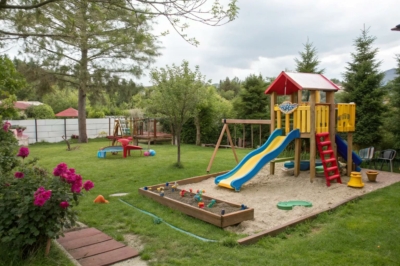1. Slides and Climbing Structures
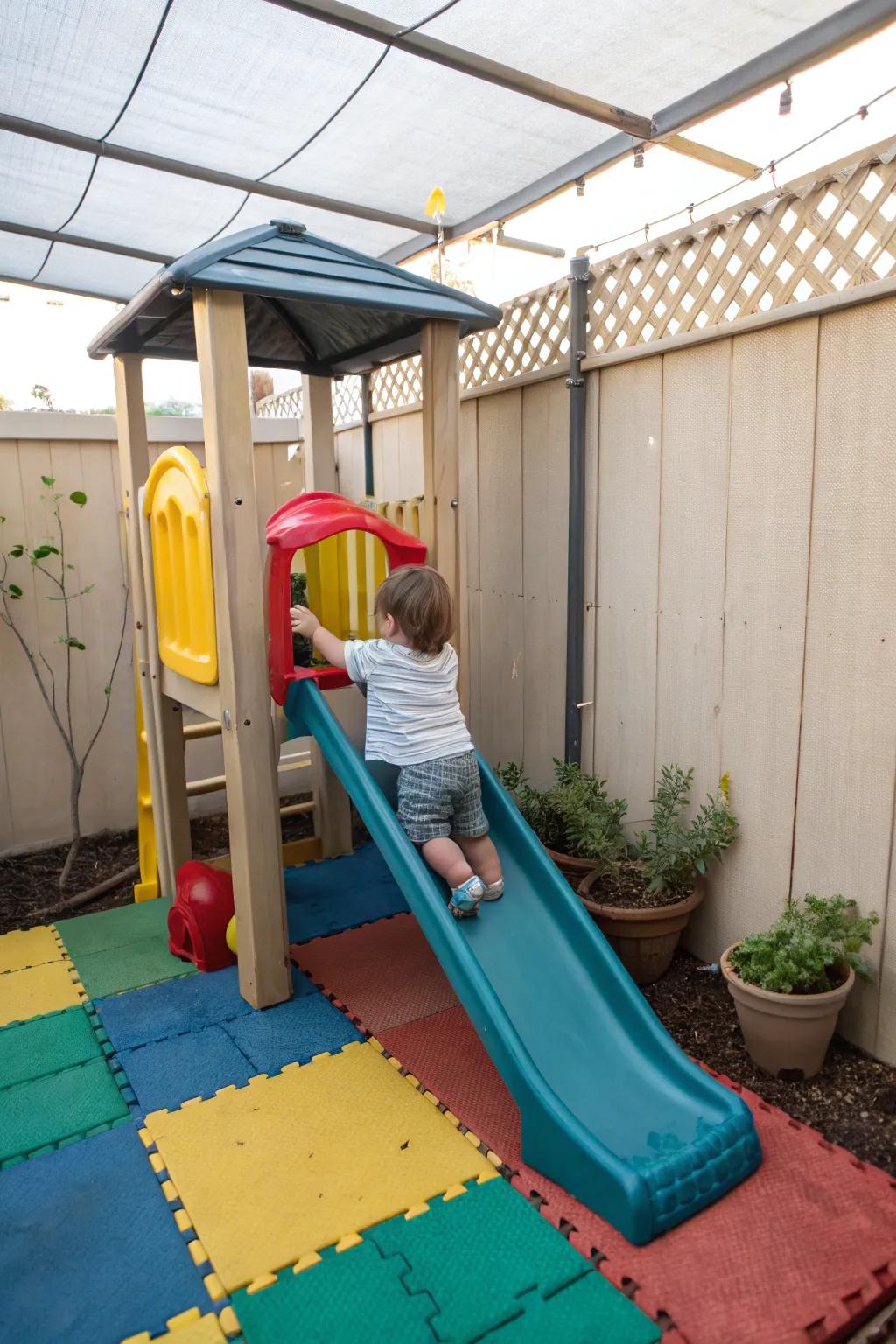
Incorporate a slide and climbing structure for toddlers to develop their motor skills while having a blast. My little ones adore the thrill of the slide combined with the challenge of climbing.
Possibly helpful picks:
- Toddler Climbing and Slide Playset: Encourage motor skills with this fun playset; perfect for energetic toddlers seeking adventure!
- Outdoor Climber with Slide for Toddlers: Boost your child’s confidence and coordination with a safe and colorful climbing slide combo.
- Plastic Slide and Climber Set: Provide hours of entertainment with a durable and engaging slide and climber for young adventurers.
2. Create Play Zones
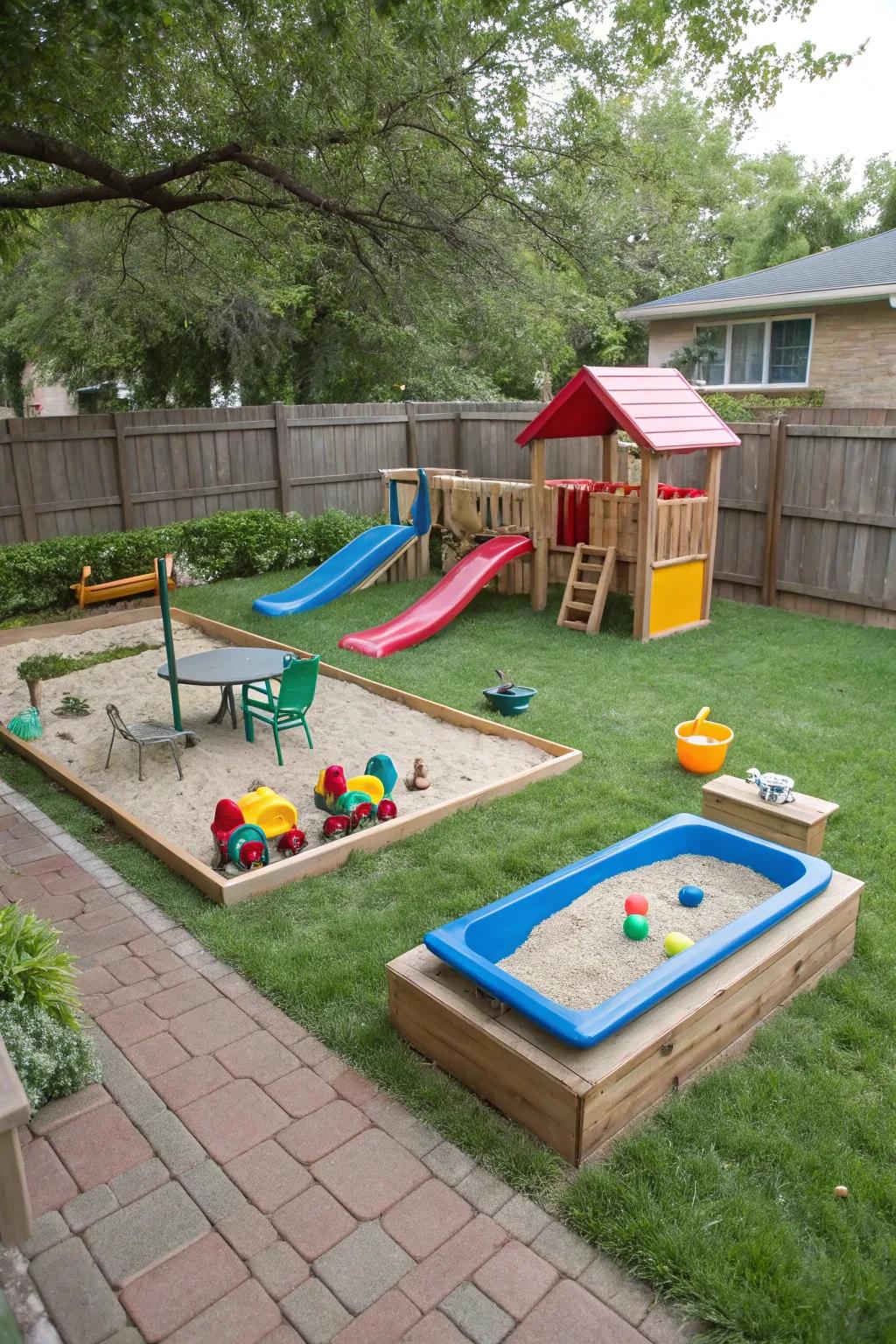
Designate different play zones for varied activities. My backyard has separate areas for climbing, sandbox, and water play, keeping things exciting.
Explore these options:
- Toddler Climbing Playset: Encourage adventure and activity with a safe, engaging climbing playset for endless fun.
- Sandbox with Cover: Provide a designated sand play area with a sandbox featuring a cover to keep it clean.
- Kids Water Play Table: Stimulate sensory play and creativity with a fun and interactive water play table for toddlers.
3. Compact Backyard Solutions
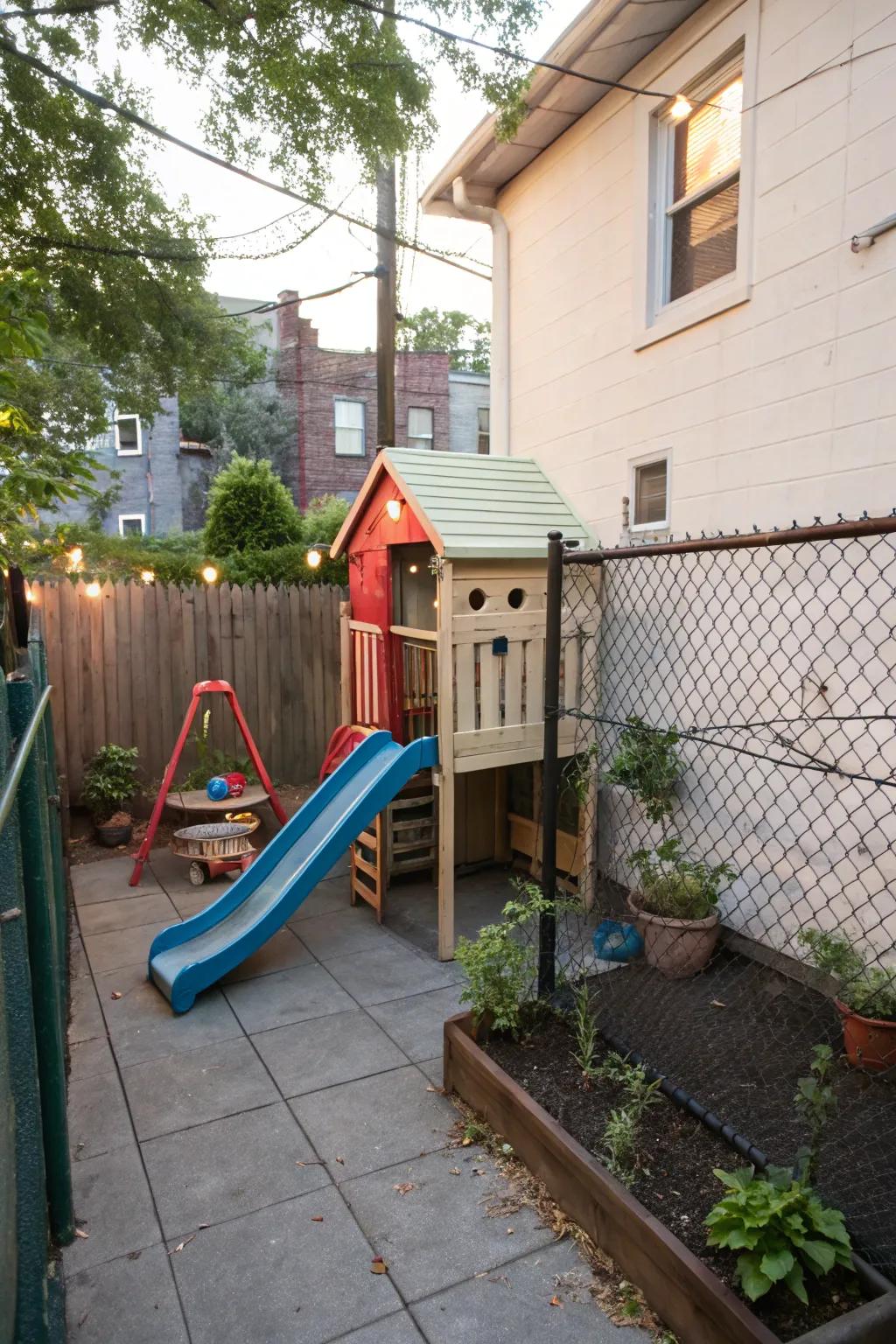
Even in smaller spaces, you can create a delightful play area with compact designs. A slide or mini climbing structure can fit snugly into any backyard corner.
A few things you might like:
- Toddler Slide: Add excitement to your backyard with this colorful slide, perfect for active toddlers.
- Mini Climbing Structure: Encourage physical activity with a mini climbing structure designed for small spaces.
- Playhouse with Slide: Enhance your outdoor setup with a playhouse and slide combo for endless fun.
4. Colorful Play Equipment
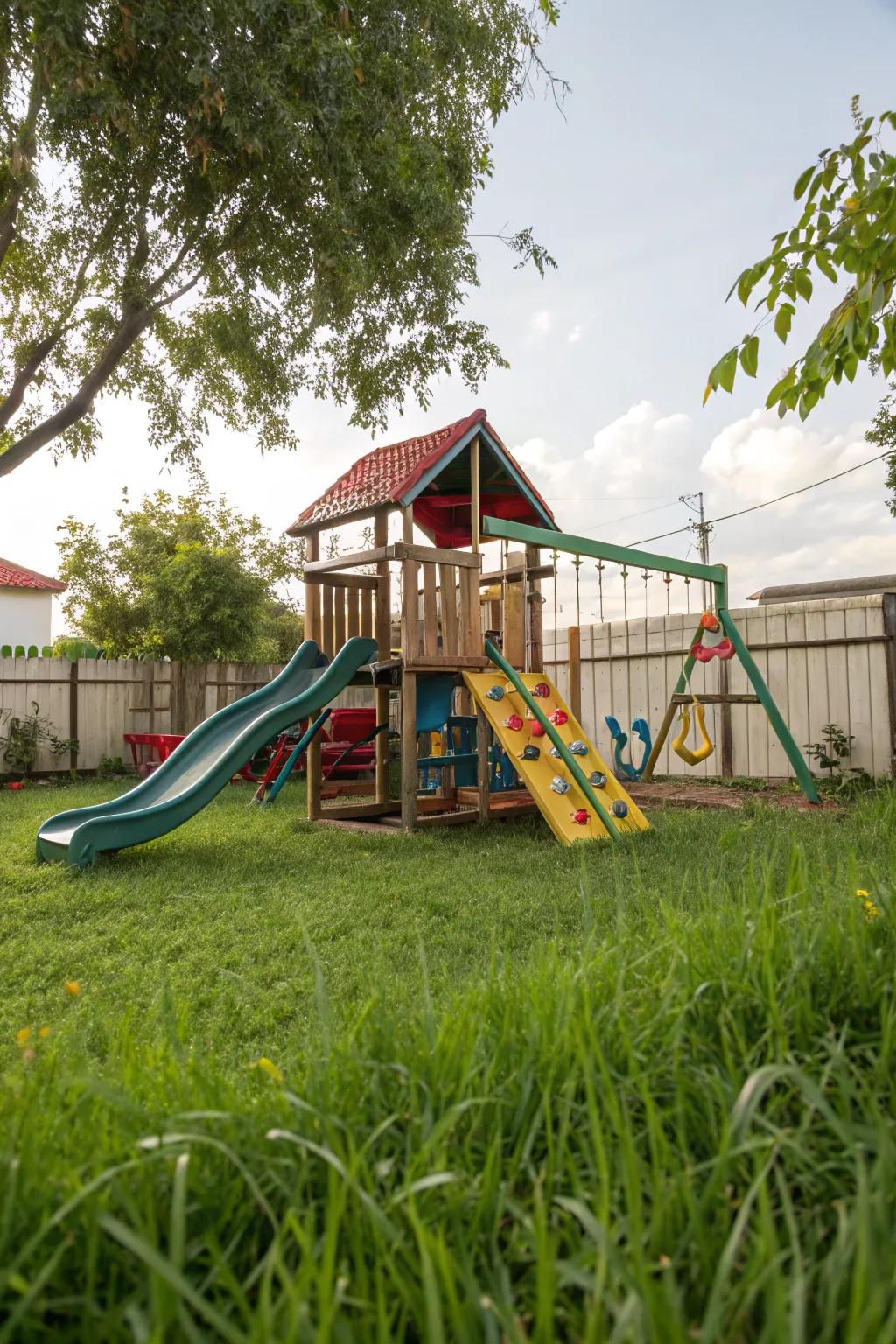
Bright and colorful play equipment is a surefire way to catch your toddler’s attention and spark their imagination. I love using vibrant hues to create a cheerful atmosphere that invites endless playtime.
A few relevant products:
- Multicolor Toddler Climber and Slide Set: Encourage active play with this vibrant climber and slide set, perfect for imaginative adventures.
- Bright Primary Color Swing Set: Add excitement to your backyard with this colorful swing set for endless toddler fun.
- Vibrant Toddler Playhouse: Spark your child’s imagination with a playhouse full of bright, stimulating colors and fun features.
5. Nature-Inspired Play Elements
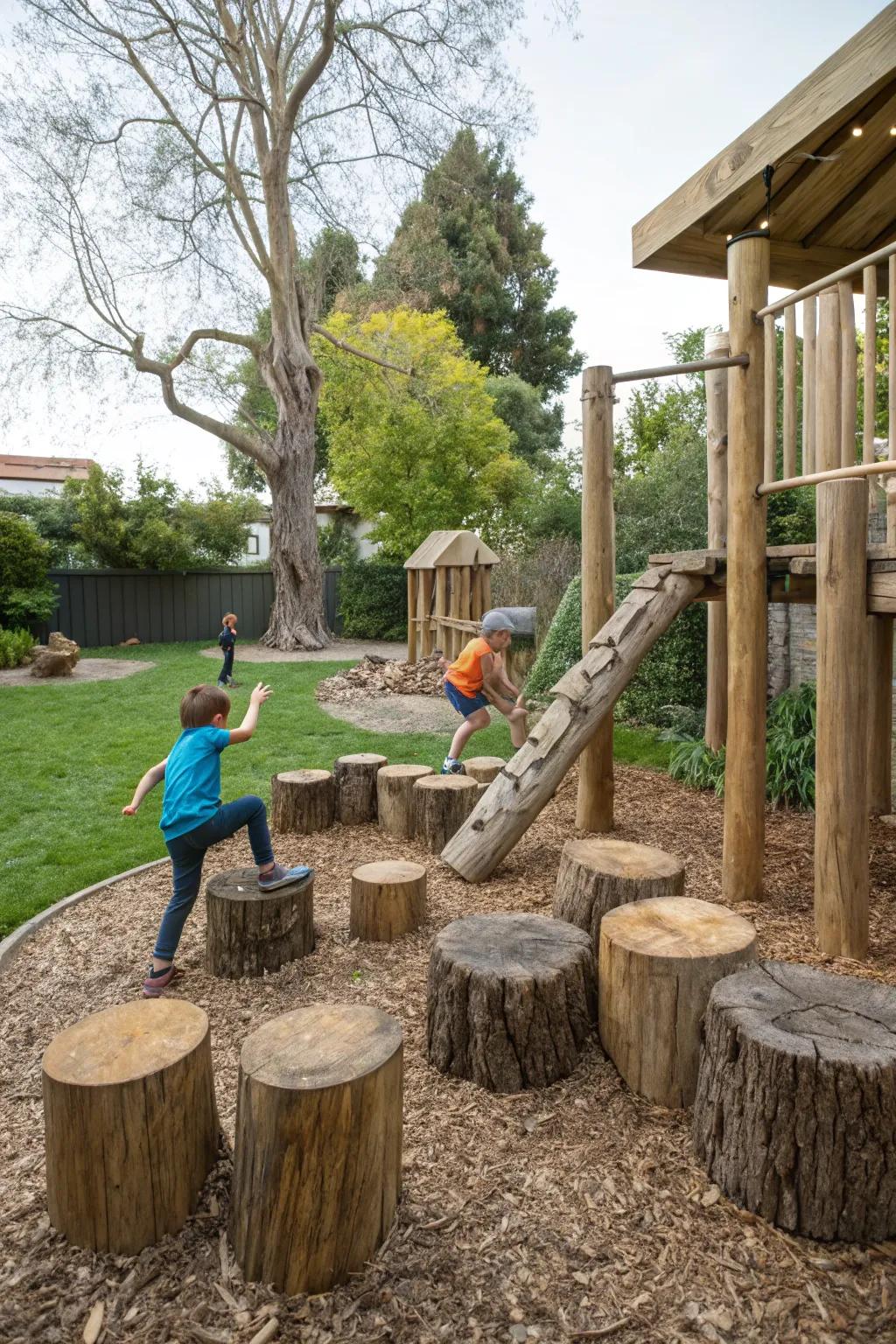
Blend play with the natural world by incorporating nature-inspired elements like logs or tree stumps. My garden feels like an adventure with these rustic touches.
Might be a good match:
- Wooden Tree Stump Steppers: Encourage your toddlers to explore balance and agility with these sturdy wooden steppers.
- Natural Log Balance Beam: Let your kids enhance their coordination skills on a safe, rustic log balance beam.
- Eco-Friendly Play Logs: Transform your garden into an adventure area with these eco-friendly play logs.
6. Safe and Soft Surfaces
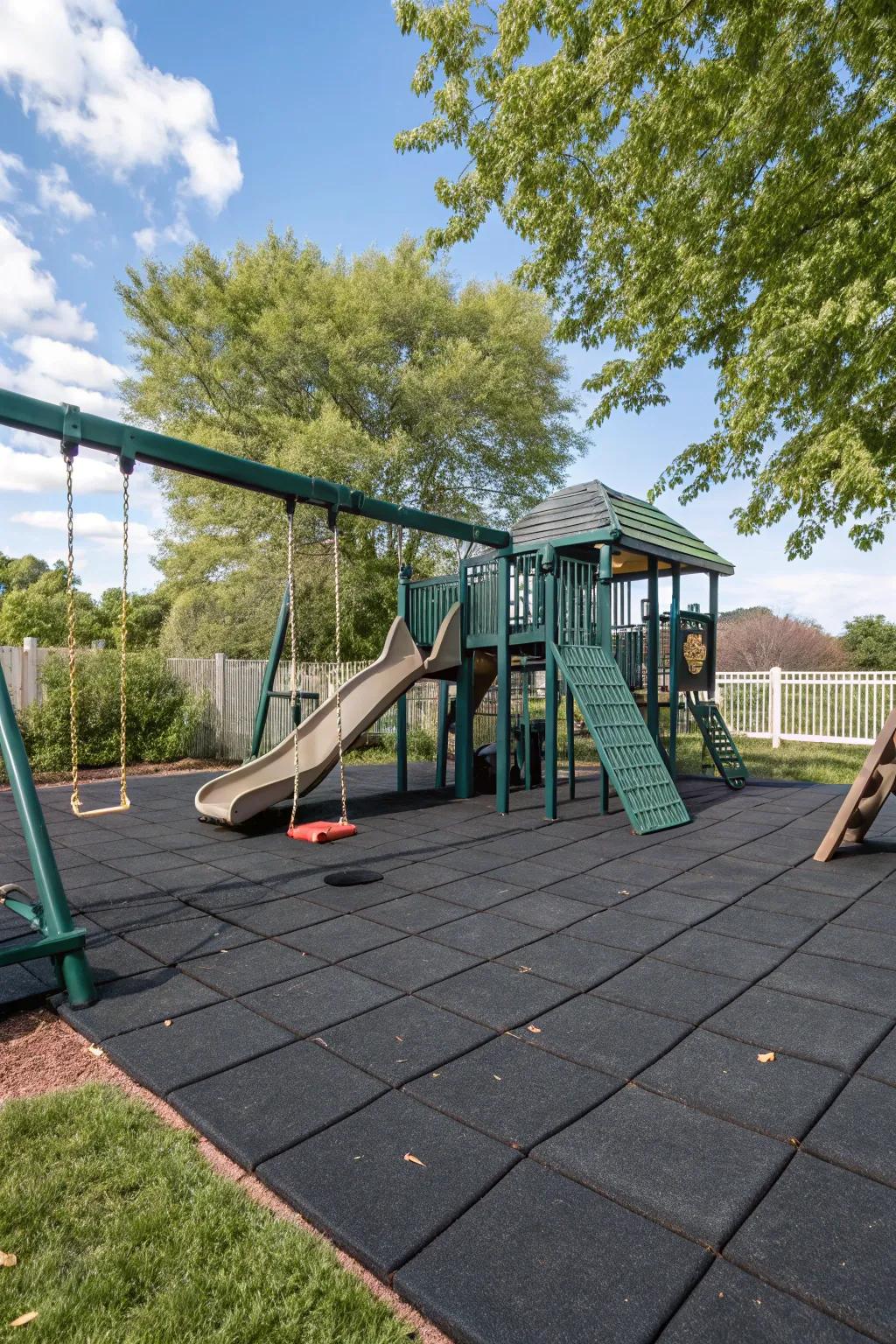
Ensure safety with soft surfaces like rubber or sand. In my experience, these materials provide peace of mind during playtime tumbles.
You might give these a try:
- Rubber Playground Tiles: Install these durable tiles for a safe, cushioned landing to protect toddlers during playtime.
- Outdoor Play Sand: Add soft play sand to playground areas for safe, fun exploration and creativity for toddlers.
- Foam Play Mats: Set up foam mats for a soft, safe surface that absorbs impact from unexpected tumbles.
7. Sandboxes for Creative Play
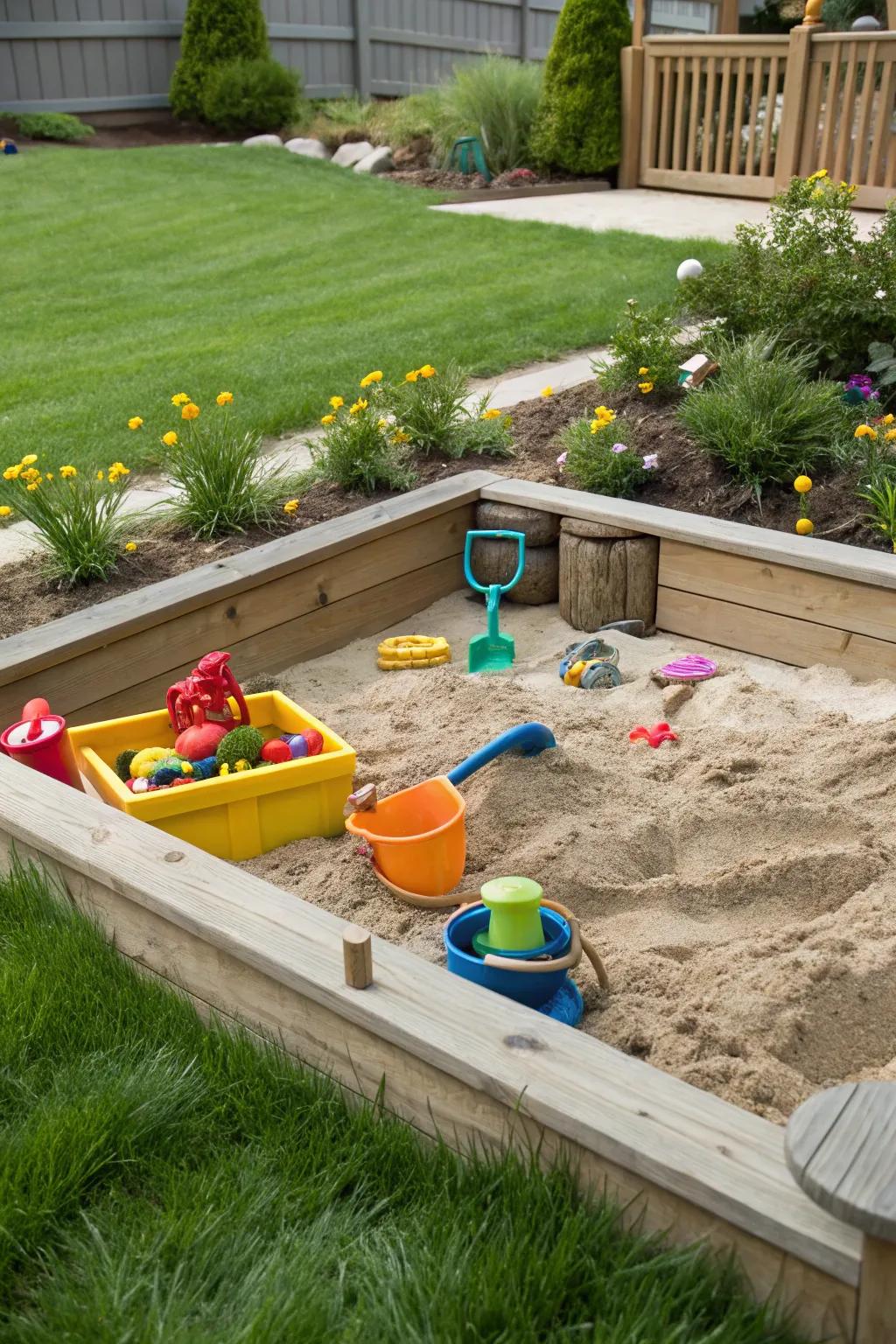
A sandbox is perfect for sensory play and encourages creativity. I find that my kids can spend hours building castles and digging for treasures.
Try these:
- Sandbox with Cover: Upgrade your sandbox setup with a cover, keeping sand clean and ready for endless fun.
- Kids’ Sandbox Toys Set: Enhance playtime with colorful sandbox toys, perfect for building creativity and motor skills.
- Outdoor Sandbox with Bench: Transform your yard with this sandbox featuring benches, encouraging interactive play and relaxation.
8. DIY Playhouse Magic
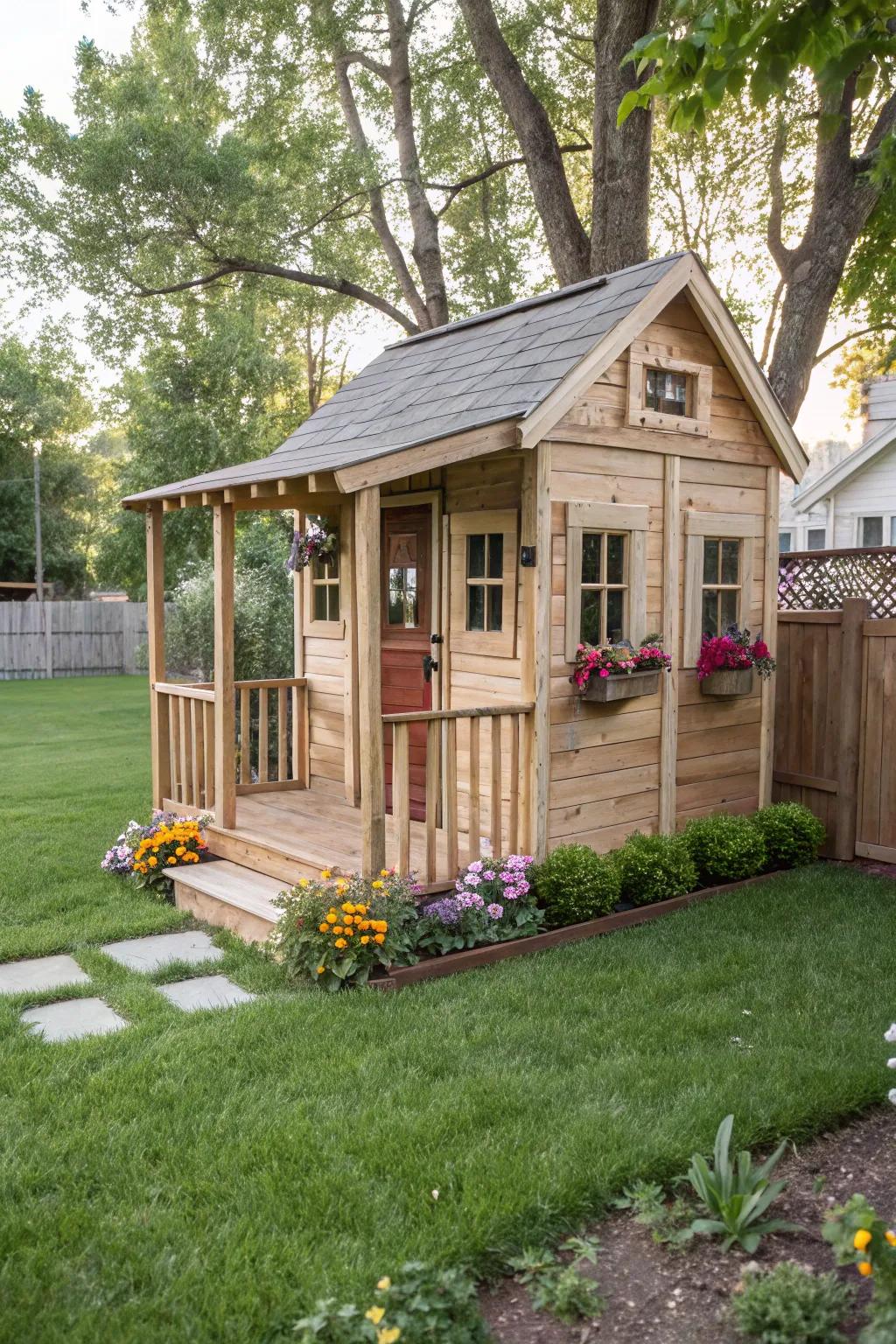
Build a DIY playhouse for imaginative adventures. My kids love their mini home, where they host tea parties and make-believe adventures.
A few suggestions:
- Children’s Play Kitchen Set: Inspire creativity with a play kitchen set for endless tea parties and pretend cooking fun.
- Kids’ Outdoor Furniture Set: Add cozy seating with a kids’ outdoor furniture set for playhouse tea parties and gatherings.
- Imaginative Playhouse Decor Kit: Enhance the playhouse with decor kits that spark imagination and personalized adventures.
9. Mini Trampoline Joy
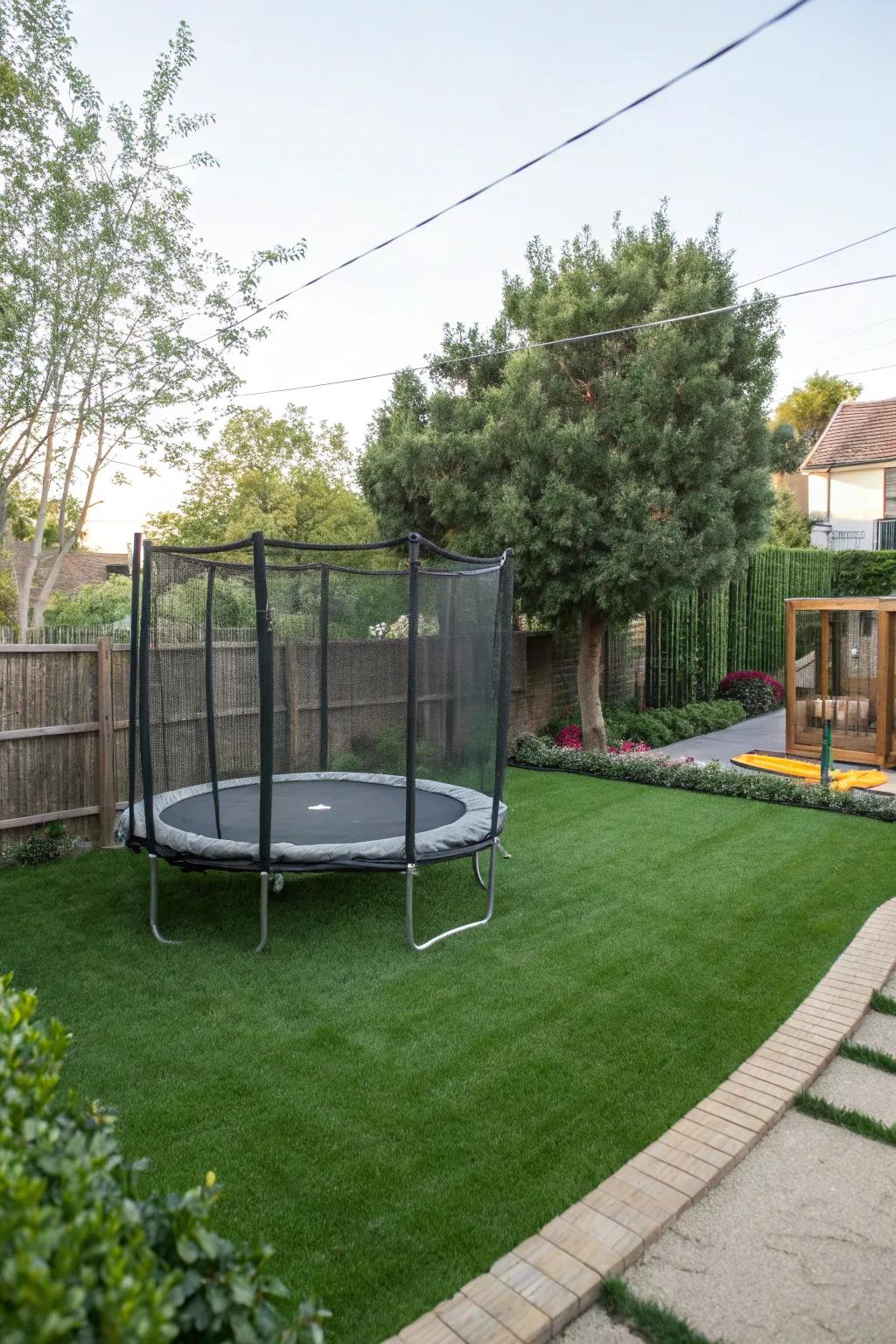
Add a mini trampoline for bouncing fun. It’s a great way for my toddlers to burn off energy while enjoying the sensation of flying high.
Some handy options:
- Toddler-Sized Mini Trampoline with Handle: Encourage safe bouncing with this handle-equipped mini trampoline, perfect for active toddlers.
- Indoor/Outdoor Safety Enclosure Mini Trampoline: Keep your little one safe with this mini trampoline featuring a protective safety enclosure.
- Foldable Mini Trampoline for Toddlers: Easily store or transport this foldable mini trampoline designed for exciting toddler play sessions.
10. Fairy Garden Magic
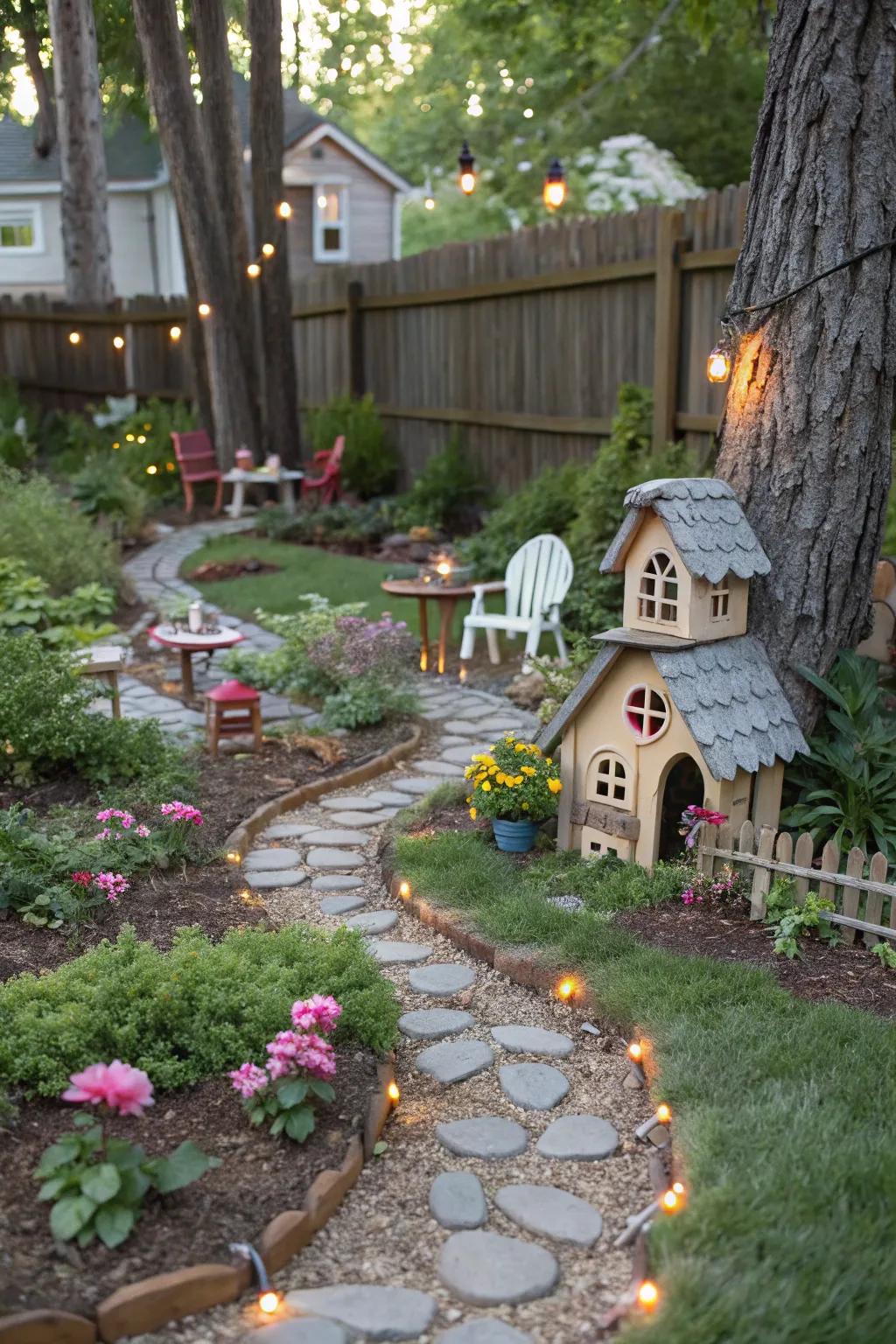
Craft a fairy garden to spark imagination. My kids are enchanted by the tiny world we’ve created with little houses and pathways.
These products might help:
- Fairy Garden Miniature Houses: Create enchanting spaces with miniature houses that add charm and character to your fairy garden.
- Pathway Stones for Fairy Gardens: Design delightful paths with miniature stones to guide fairies through your magical garden.
- Outdoor String Lights: Illuminate your fairy garden with warm string lights, adding a magical glow to evening playtime.
11. Outdoor Game Area
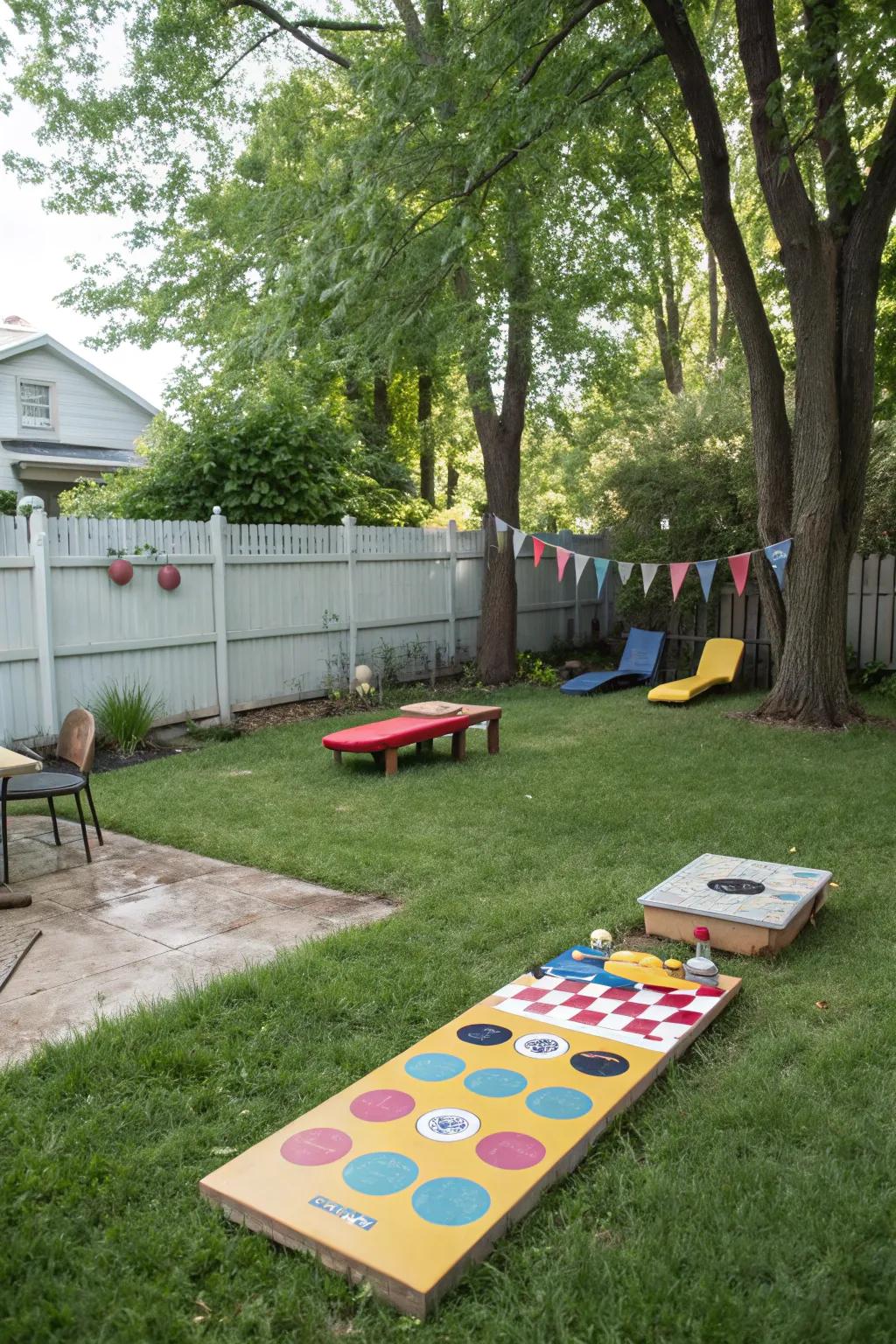
Dedicate a space for outdoor games like Twister or Cornhole. We often enjoy family game time under the sun, with plenty of laughter and joy.
May just do the trick:
- Outdoor Cornhole Set: Create endless family fun with this durable cornhole set perfect for backyard playtime.
- Giant Outdoor Twister Mat: Enjoy hours of laughter with a giant Twister mat designed for outdoor use.
- Colorful Bunting Flags: Add vibrant decor to your play area with colorful bunting flags, enhancing the fun atmosphere.
12. Sensory Bins Exploration
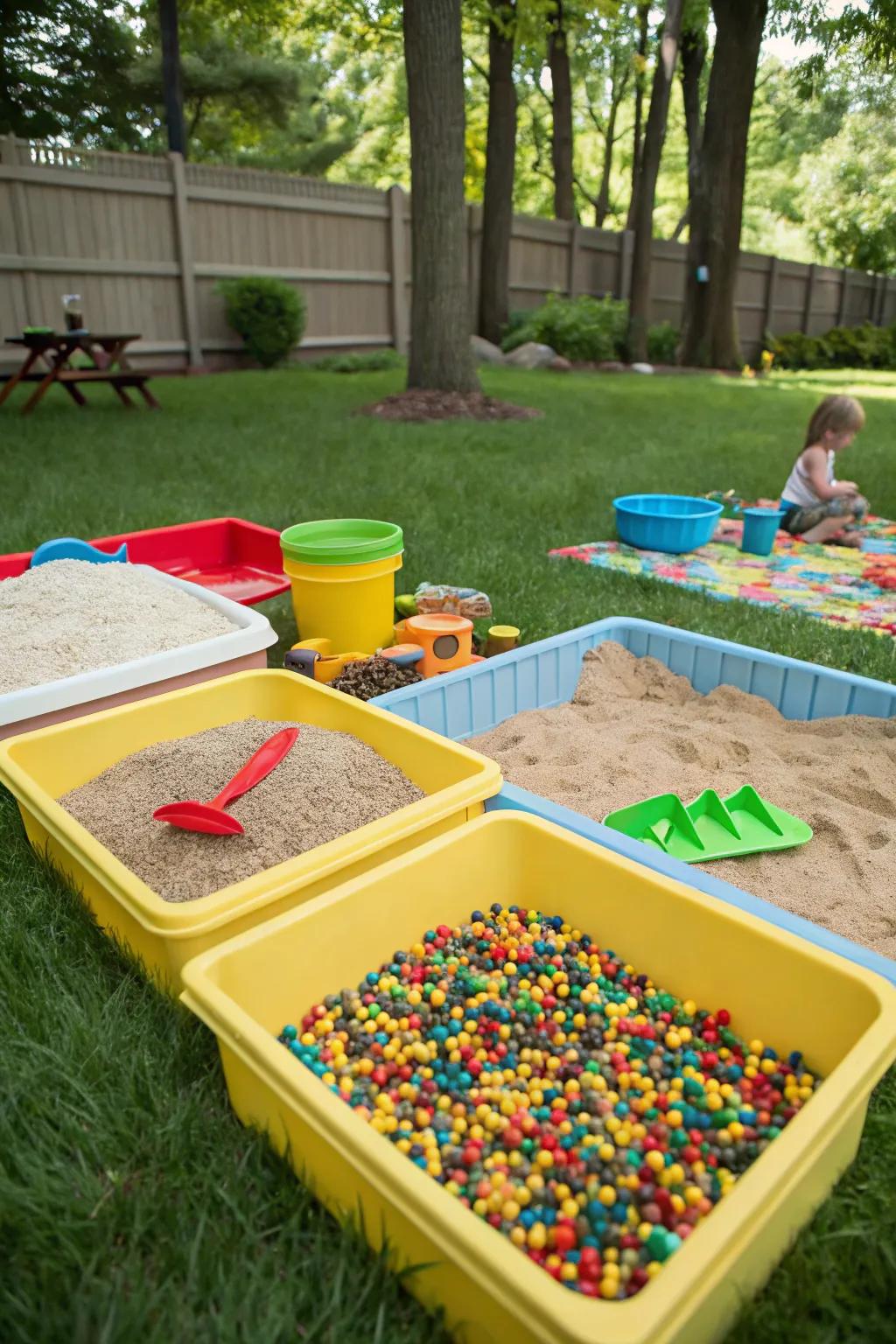
Set up sensory bins filled with sand, rice, or beans for tactile exploration. My little ones love discovering textures and hidden treasures inside.
Check if these fit your needs:
- Sensory Bin Set: Encourage tactile play with a versatile sensory bin set perfect for endless exploration and fun.
- Play Sand and Tools: Enhance creativity and tactile experience with engaging play sand and colorful tools for little hands.
- Colorful Sensory Beads: Introduce vibrant colors and exciting textures with these fun-filled sensory beads for exploration.
13. Water Play Wonders
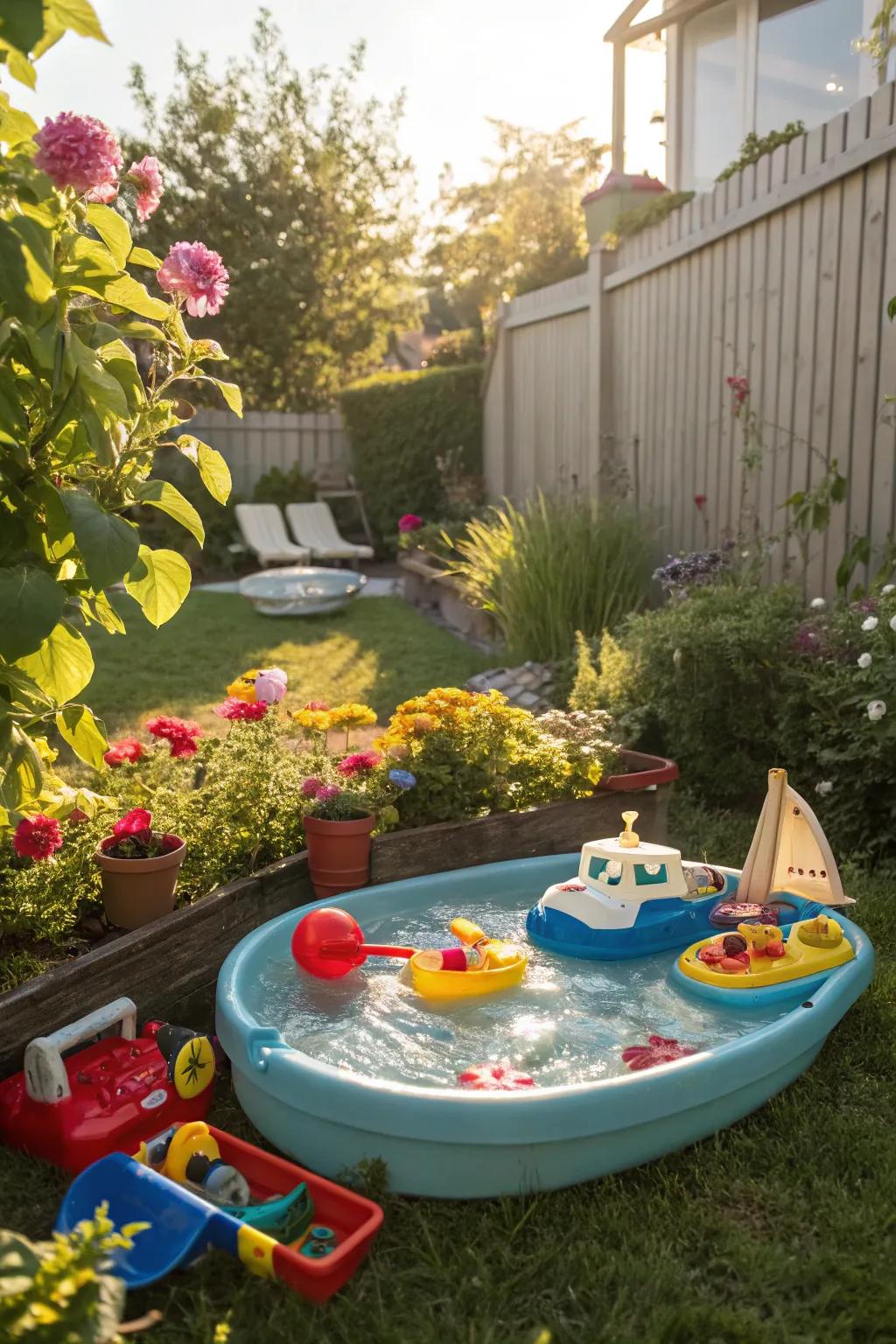
Introduce a water table for splashy fun, especially during hot Texas summers. It’s a favorite in my yard, providing cool relief and endless entertainment.
You might like:
- Children’s Water Table with Accessories: Set up this water table to offer refreshing splashy fun, ideal for active toddlers.
- Outdoor Water Play Set: Create a backyard splash zone with this interactive water play set for endless enjoyment.
- Water Play Boat Toys for Toddlers: Engage your child’s imagination with these floating toys, perfect for water play adventures.
14. Backyard Camping Spot
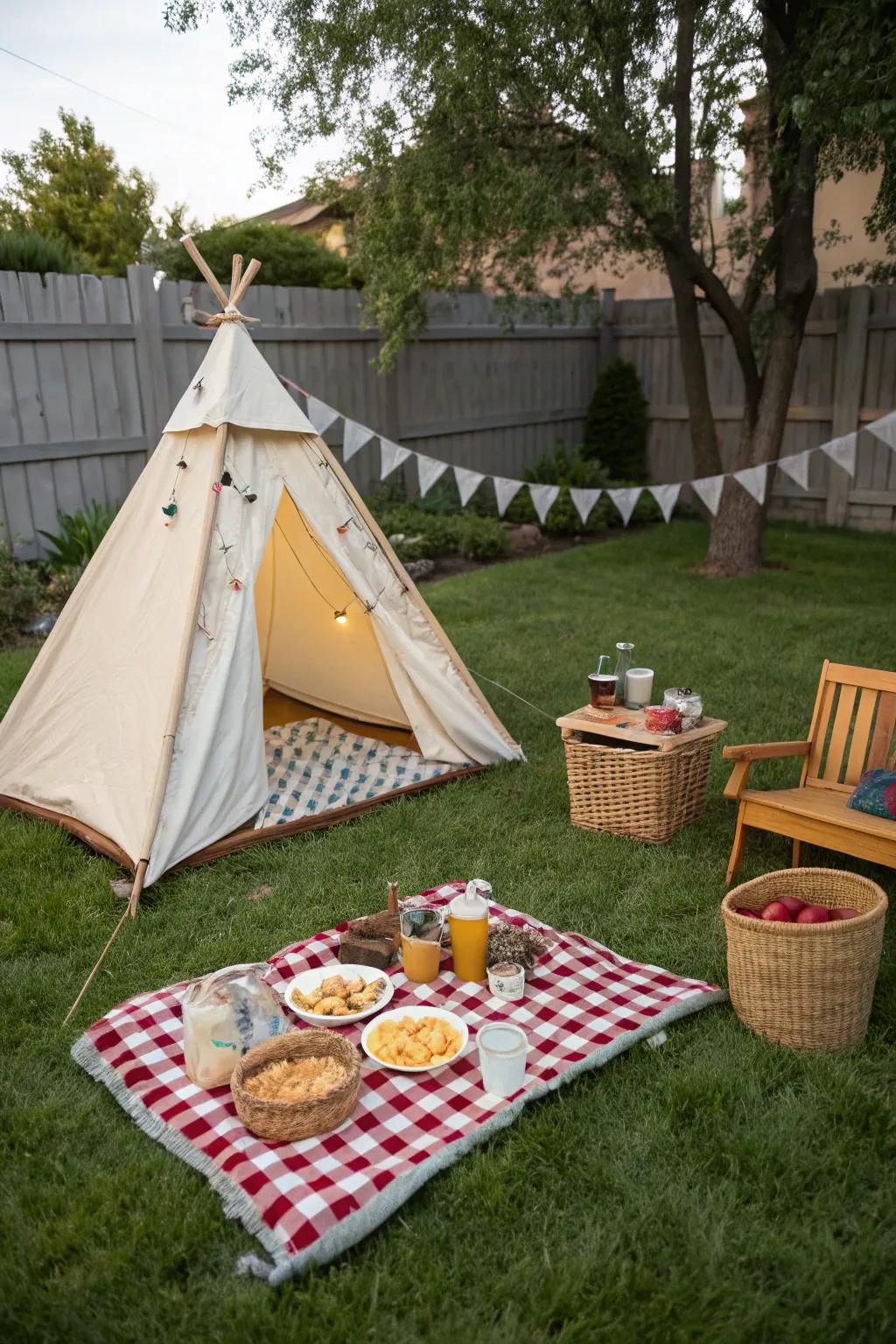
Create a backyard campsite for mini camping adventures. We love setting up a tent for starlit stories and pretend campfires.
Maybe worth checking out:
- Children’s Play Tent: Set up a cozy play tent for endless backyard adventures under the stars.
- LED String Lights: Illuminate your backyard campsite with charming, energy-efficient LED string lights.
- Pretend Campfire Toy: Bring imagination to life with a fun and safe pretend campfire set for storytelling.
15. Chalk Wall Creativity
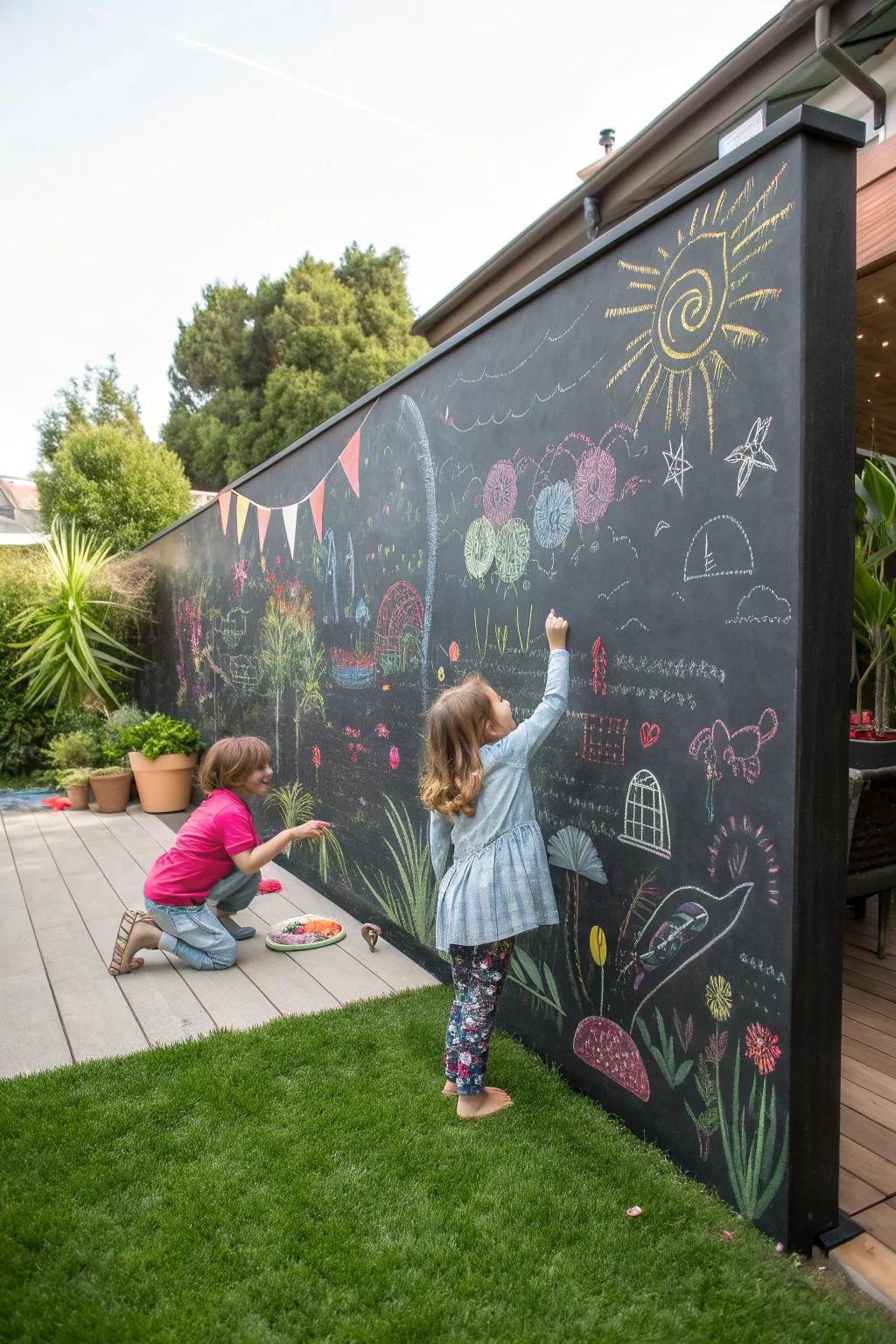
Install a chalk wall for artistic expression. It’s a canvas for my children to draw, write, and create masterpieces under the open sky.
A few choices to try:
- Outdoor Chalkboard Paint: Transform any surface into an art zone with easy-to-apply outdoor chalkboard paint.
- Washable Sidewalk Chalk Set: Encourage creativity with vibrant, washable chalk perfect for endless artistic fun.
- Sturdy Chalk Holder: Keep chalk secure and hands clean with a convenient, easy-to-use chalk holder.
16. Treehouse Adventure
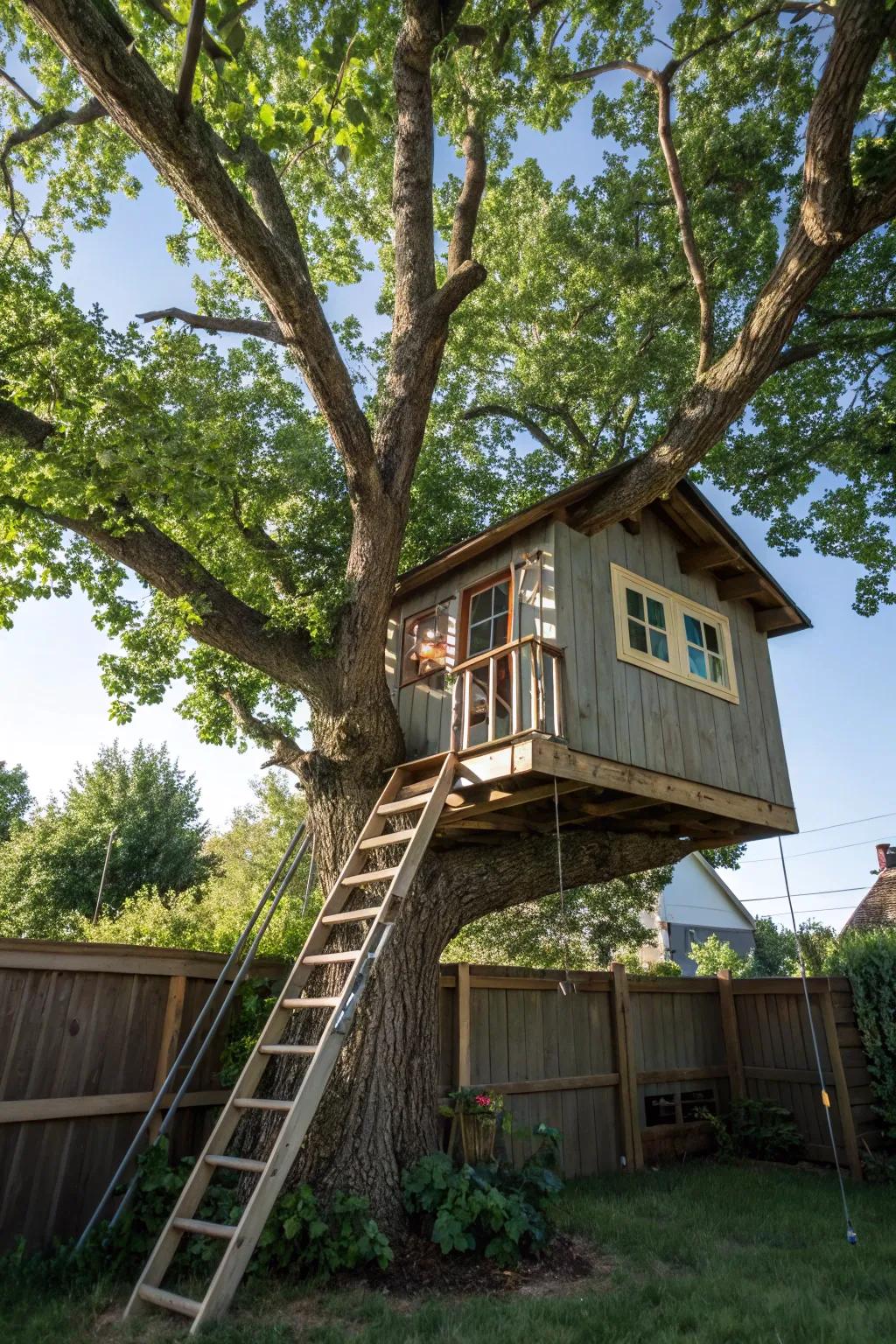
Build a treehouse for adventurous play and secret hideouts. It’s a beloved spot in our yard for imaginative games and quiet moments.
Useful items to consider:
- Wooden Ladder for Treehouse: Ensure safe climbing with this sturdy wooden ladder. Enhance your child’s treehouse experience today!
- Treehouse Climbing Rope: Add excitement with a durable climbing rope. Perfect for adventurous little explorers in your backyard!
- Outdoor Kids Telescope: Boost imaginative play with a kids’ telescope. Perfect for exploring from the treehouse lookout.
17. Outdoor Mud Kitchen
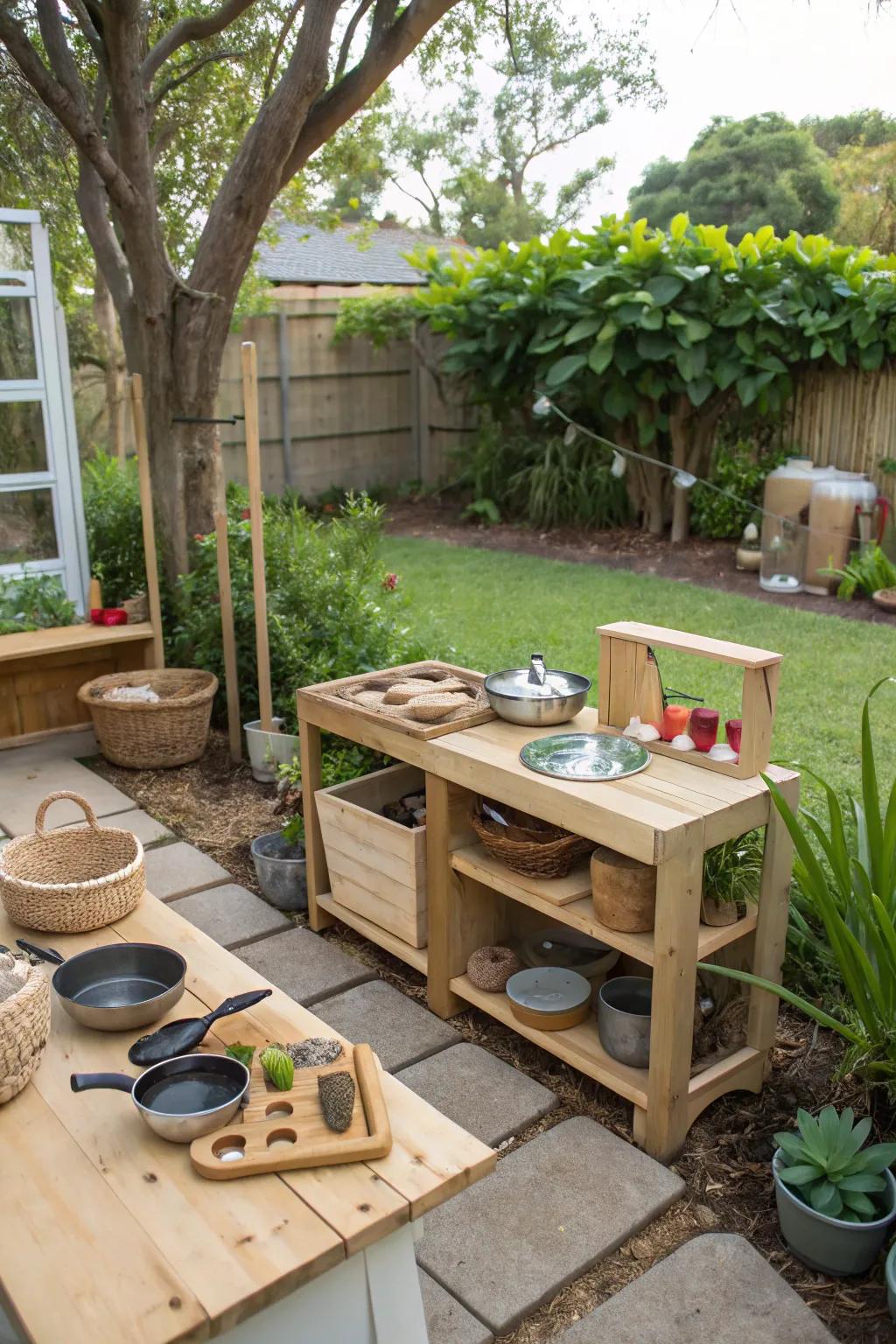
Create an outdoor mud kitchen for messy, creative play. My kids love whipping up ‘mud pies’ and ‘leaf soup’ in their little kitchen.
A few helpful options:
- Wooden Play Kitchen Set: Encourage creativity and imaginative play with a sturdy, outdoor-friendly wooden play kitchen set.
- Kids’ Cooking Utensil Set: Equip your child’s mud kitchen with durable, child-friendly cooking utensils for endless fun.
- Garden Play Accessories: Add variety to playtime with natural garden items like leaf molds and flower pots.
18. Musical Play Area
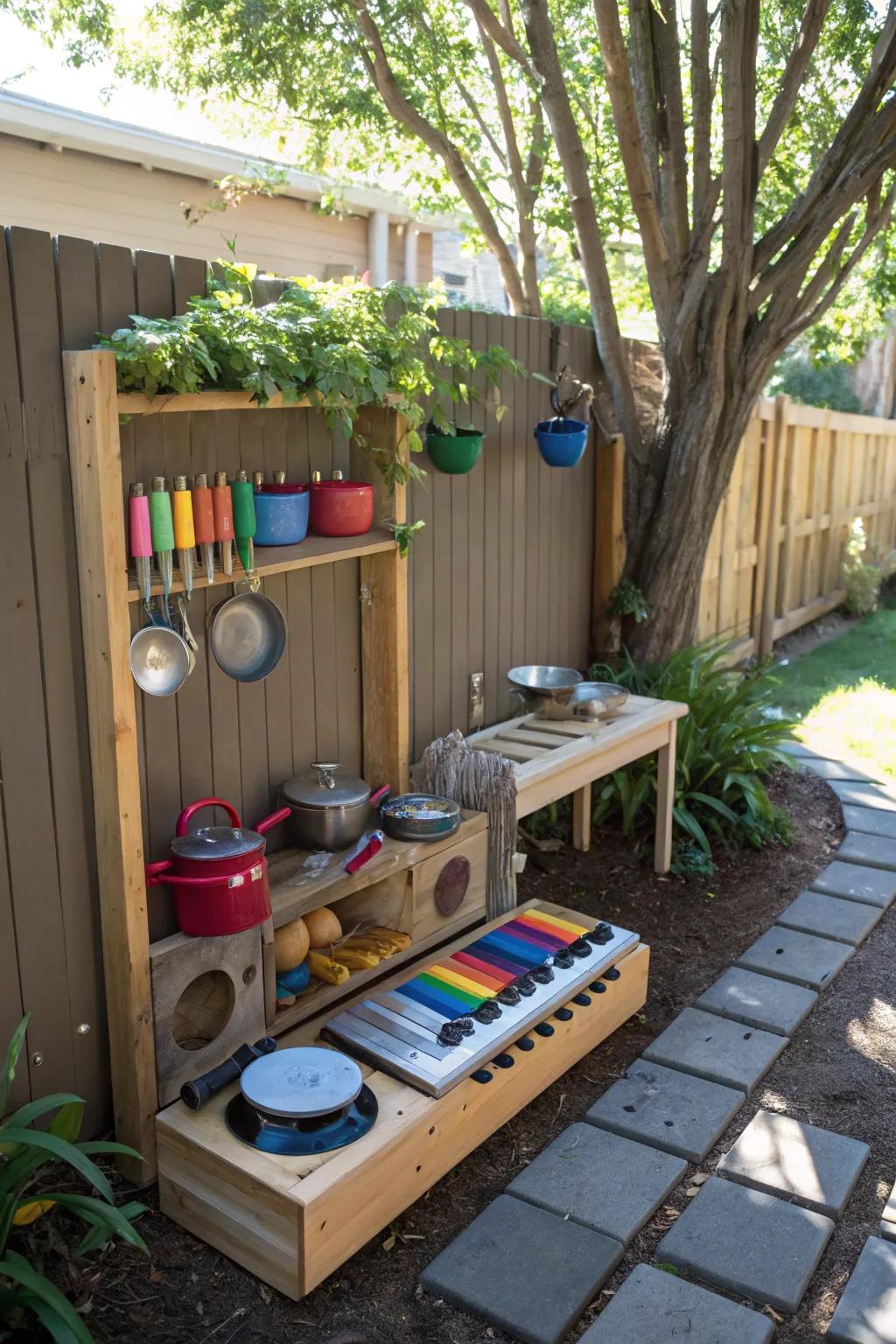
Incorporate a musical play area with pots, pans, and xylophones. My toddlers enjoy making music and rhythms, creating a joyful symphony in the yard.
Items that may come in handy:
- Toddler Musical Instruments Set: Encourage creativity with a set of musical instruments designed for fun and safe play.
- Outdoor Xylophone for Kids: Introduce your child to musical exploration with a colorful xylophone perfect for outdoor fun.
- Kid-Safe Pots and Pans Playset: Enhance imaginative play with a safe, durable pots and pans set for joyful noise-making.
